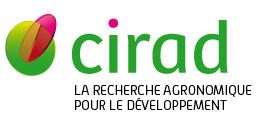Gendered food mapping on boiled cassava in Benin. Understanding the Drivers of Trait Preferences and the Development of Multi-user RTB Product Profiles, WP1, Step 2
Adinsi L., Honfozo F.L., Djibril Moussa I., Bouniol A., Akissoûˋ N., Hounhouigan J.D., Forsythe L.. 2021. Cotonou : RTBfoods Project; CIRAD, 48 p..
DOI: 10.18167/DVN1/NKWWSR
The current report deals with ãgendered food mapping of boiled cassava quality characteristicsã. A survey was carried out to identify the key user-preferred quality characteristics of boiled cassava in rural communities of South-east Benin (Bonou and Dangbo), along the food chain. Cassava farmers, processors and consumers were interviewed on varieties grown, the reasons of varieties choice, and the good and bad characteristics of cassava varieties for making boiled cassava. This was based on methodologies including the triangulation of data collection tools and informants' sources (community members and leaders; farmers; processors and consumers of boiled cassava; market leaders). Cassava planting practices varied from one location to another, and depended also on the wealth category within location. A great diversity of cassava varieties comprising nine ecotypes were processed into various products. The top two preferred cassava varieties for boiling were ãAgricã and ãDossiã known as the first and second most important varieties, respectively, in the district of Dangbo, and for Men and women while the best varieties in Bonou district were Kpû´kû´ and Attinwûˋwûˋ. Irrespective of gender and regions, the producers preferred early maturing varieties (5ã7 months for maturity) with heavy and big roots at harvest, and which final products (boiled cassava, gari, tapioca, lafun, klacou, ablo, agnan, etc.) possess the characteristics demanded by consumers. In the specific case of boiled cassava, the high quality is expected to be white, soft, crumbly, attractive, softened to the touch, easy to swallow and not bitter.
Documents associûˋs
Document technique
Agents Cirad, auteurs de cette publication :
- Bouniol Alexandre — Persyst / UMR QUALISUD
